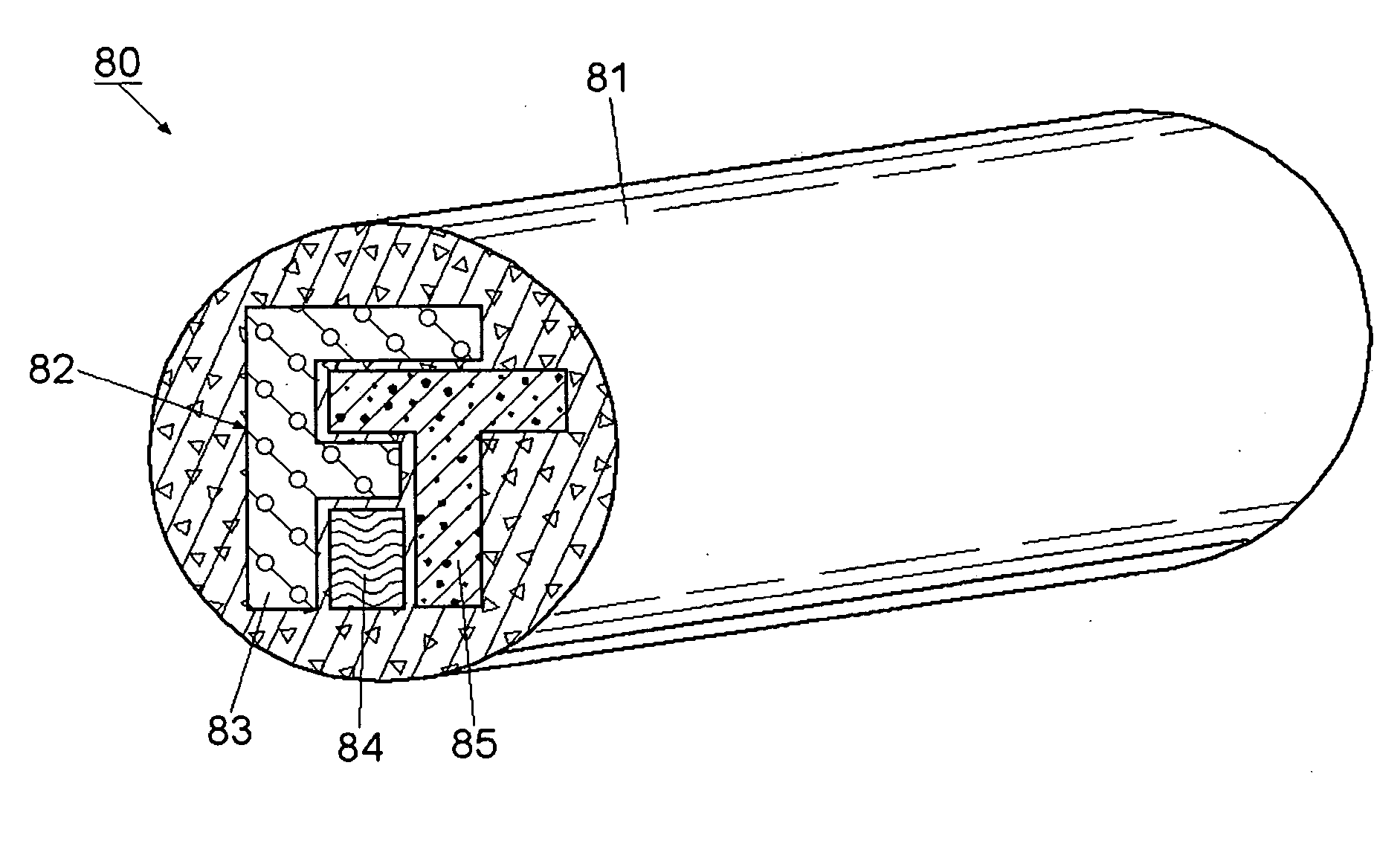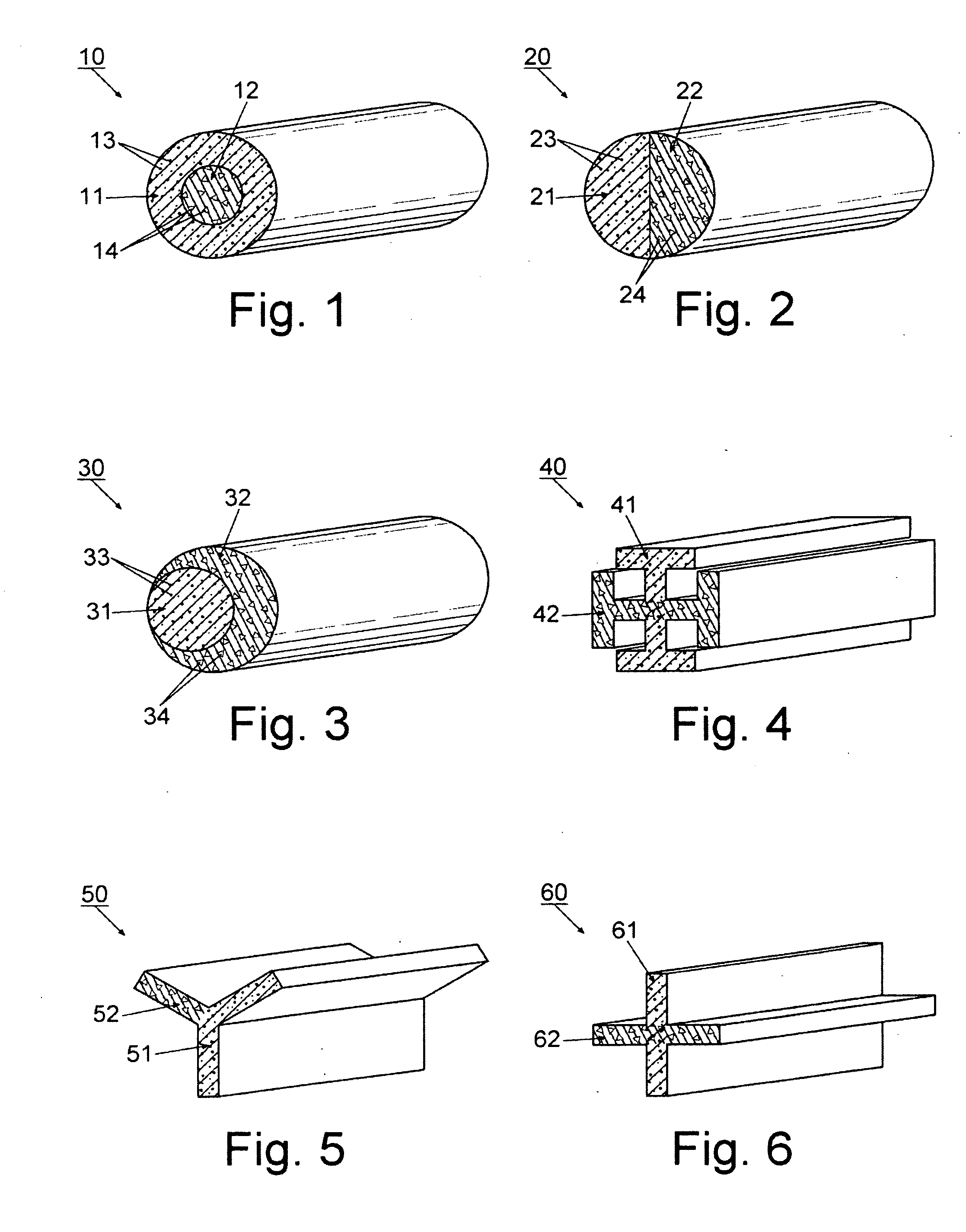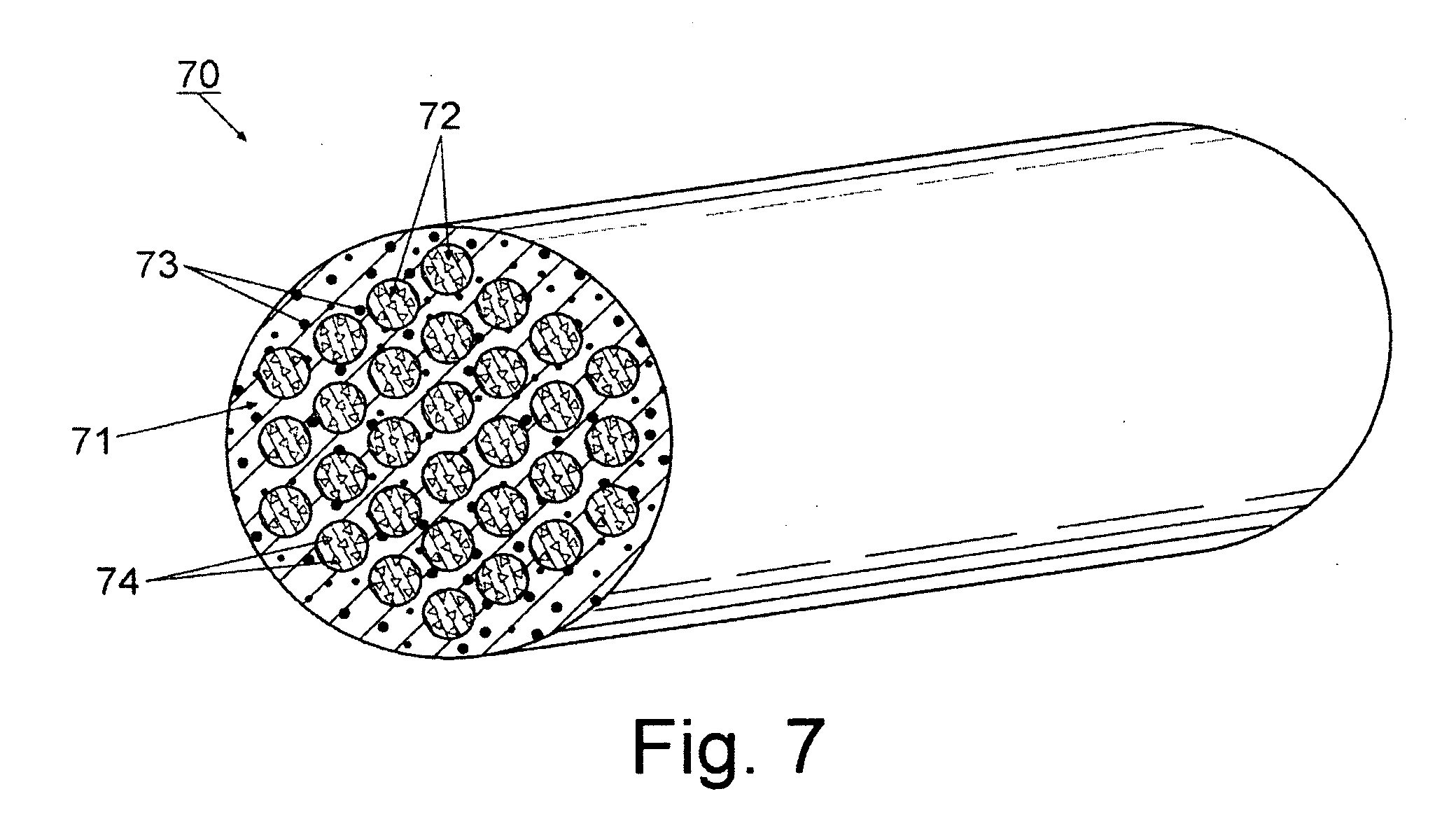Multicomponent taggant fibers and method
- Summary
- Abstract
- Description
- Claims
- Application Information
AI Technical Summary
Benefits of technology
Problems solved by technology
Method used
Image
Examples
example 1
[0047]Continuous multi-filament melt spun fiber is produced using a bicomponent extrusion system.
[0048]The sheath component of the bicomponent fiber consists of polyethylene terephthalate with an inherent viscosity of 0.64, blended with finely-divided particles of a suitable fluorophore at a loading of between 0.1 and 3.0 percent by weight.
[0049]The core component consists of polyethylene terephthalate with an inherent viscosity of 0.64, blended with finely-divided particles of yttrium oxide at a loading of between 0.1 and 3.0 percent by weight.
[0050]The weight ratio of sheath to core is 50 / 50. The two components are subjected to sheath-and-core type conventional bicomponent melt spinning. The filaments are subsequently drawn, thereby yielding a three (3) denier multifilament fiber.
example 2
[0051]A continuous multi-filament melt spun fiber is produced using a bicomponent extrusion system forming a core and sheath as shown in FIG. 8.
[0052]The first zone comprises a sheath of the bicomponent fiber consisting of polyethylene terephthalate with an inherent viscosity of 0.64, blended with finely-divided particles of a suitable fluorophore at a loading of between 0.1 and 3.0 percent by weight.
[0053]The second zone comprises three core members consisting of polyethylene terephthalate with an inherent viscosity of 0.64, blended with finely-divided particles of yttrium oxide at a loading of between 0.1 and 3.0 percent by weight. The three core members represent the letters “F”, “I” and “T” which form a company logo and are numbered 83, 84, 85 respectively. Each separate core member (83, 84 or 85) may contain the same or different taggants and may be formed of the same or different polymers.
[0054]The weight ratio of sheath to the three core members is approximately 50 / 50%. Two m...
PUM
| Property | Measurement | Unit |
|---|---|---|
| Length | aaaaa | aaaaa |
| Fluorescence | aaaaa | aaaaa |
Abstract
Description
Claims
Application Information
 Login to View More
Login to View More - R&D
- Intellectual Property
- Life Sciences
- Materials
- Tech Scout
- Unparalleled Data Quality
- Higher Quality Content
- 60% Fewer Hallucinations
Browse by: Latest US Patents, China's latest patents, Technical Efficacy Thesaurus, Application Domain, Technology Topic, Popular Technical Reports.
© 2025 PatSnap. All rights reserved.Legal|Privacy policy|Modern Slavery Act Transparency Statement|Sitemap|About US| Contact US: help@patsnap.com



